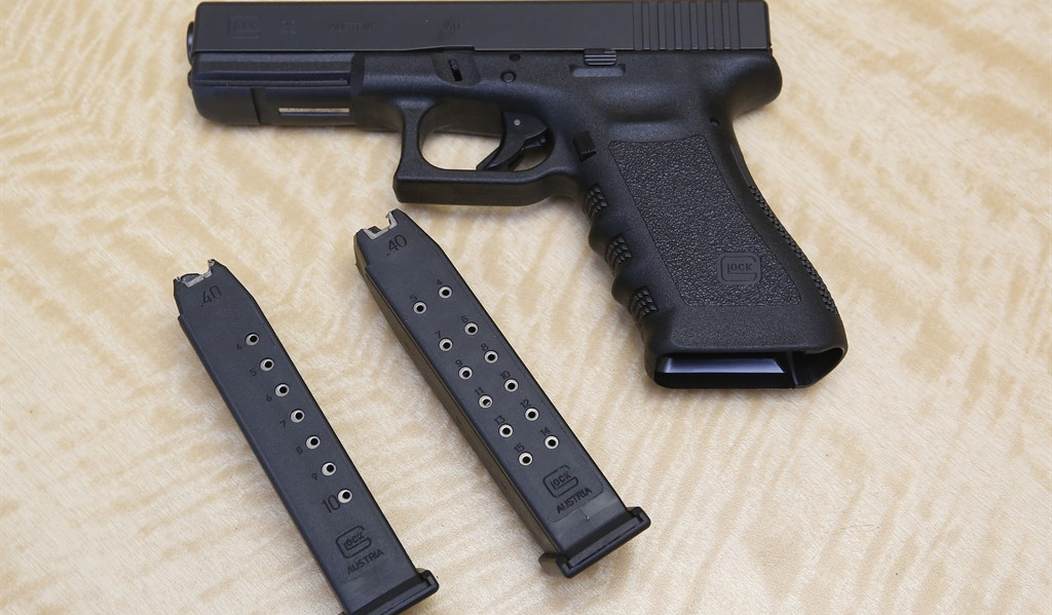The Ninth Circuit Court of Appeals has agreed to stay its decision upholding a California gun control law prohibiting the possession of ammunition magazines that can hold more than ten rounds while the case is appealed to the Supreme Court. The decision, which was anticipated by the plaintiffs in the case, became official on Monday, and gives the attorneys representing the gun owners who are challenging the law time to officially file their cert petition with the Court.
If the cert petition is filed within 150 days (which will absolutely happen), then the Ninth Circuit will keep the stay in place until the Supreme Court decides what, if anything, to do with the gun control law, which has been overturned and upheld at various points in its long and winding road to Washington, D.C.
It has long been illegal in California to sell, manufacture or buy large-capacity magazines. But a 2016 law extended the prohibition to possession.
The California Rifle & Pistol Association and several gun owners filed the lawsuit arguing the ban violates their constitutional right to self-defense and makes criminals out of otherwise law-abiding citizens.
U.S. District Court Judge Roger Benitez agreed with them and struck down the law in a 2019 ruling. A three-judge panel of the 9th Circuit also agreed.
The attorney general requested a larger, 11-judge panel reconsider the case. The panel then overturned the previous rulings and found the law constitutional. The majority opinion stated the law was a reasonable way to advance the government’s interest of reducing gun violence and that it minimally encroached on the Second Amendment right to self-defense.
What does this mean from a practical standpoint? Well, you aren’t going to be able to buy any “large capacity” magazines in California, but any such magazine that was purchased before the state’s initial ban went into effect or was bought during the one week in 2019 that “large capacity” magazines were available for sale can remain in the possession of legal gun owners.
When we spoke to plaintiffs’ attorney and California Rifle & Pistol Association head Chuck Michel about the case immediately following the Ninth Circuit’s decision, he expressed optimism that SCOTUS isn’t going to reject the case out of hand.
Instead, Michel says that SCOTUS could very well end up holding on to the case until it renders its verdict in New York State Rifle & Pistol Association v. Bruen, which probably won’t happen until next June. Then justices could either remand the California mag ban case back to the lower courts with instructions based on the Bruen decision, grant cert and hear the case themselves, or (in a worst case scenario) deny cert and allow the Ninth Circuit’s decision to remain in place.
One big reason for Michel’s optimism regarding the Supreme Court is the way in which the Ninth Circuit reached its decision. Like many other lower courts, the majority on the en banc panel concluded that California’s magazine ban should be subjected to “intermediate scrutiny”; a vague and fuzzy middle ground that allows onerous and burdensome restrictions on the right to keep and bear arms as long as the maker of those laws claim that they serve some sort of public safety benefit.
It’s almost inevitable that if the Supreme Court gets into the standard of judicial review in the Bruen case that it will have implications for the challenge to California’s magazine ban (as well as almost every other lawsuit seeking to overturn various local, state, and federal infringements on our Second Amendment rights). For that reason alone I think Michel is right that the Supreme Court isn’t going to simply deny cert here.
But as the National Shooting Sports Foundation’s Larry Keane recently noted in an op-ed, there’s more than one reason why SCOTUS shouldn’t give the Ninth Circuit’s decision in Duncan v. Bonta a pass.
Magazines capable of holding more than 10 rounds are nearly universally chosen by tens of millions of law-abiding gun owners for lawful purposes including, but not limited to, self-defense. Over 133 million standard 30-round capacity magazines are in circulation, representing more than half the magazines used in firearms today. That number would likely be much higher if states like California didn’t ban them. That was clear in the short time period when Judge Benitez struck the law as unconstitutional and before he issued a stay on his own decision, as the San Francisco Chronicle estimated hundreds of thousands may have been sold as Californians leaped at the opportunity to legally purchase magazines they deemed appropriate for their needs.
California contends the ban on standard magazines is Constitutionally viable since alternatives of magazines with restricted capacity are available. In other words, the state still “allows” gun owners to purchase and maintain magazines capable of holding just 10 rounds. That’s not what Heller holds, though. Let’s be honest. If antigun politicians succeed in limiting magazine capacity, they will then seek to ban how many lesser capacity magazines you should be allowed to own. “No one needs more than this many magazines,” they will say. Aside from the egregiously wrong notion that the government “allows” rights to be exercised, Heller clearly rules out alternative choices as an option. That’s a right retained by individuals, as Heller upheld the Second Amendment as an individual right and not a government choice of alternatives.
Whether because of the issues with standard of review or simply the merits (or lack thereof) of the state’s argument, there’s plenty for a majority of the Supreme Court to disagree with. Given the fact that the Bruen decision isn’t expected until next June, however, we shouldn’t expect SCOTUS to issue any quick decision or resolution to the California mag ban. The stay, however, will at least prevent California from subjecting its residents to the full enforcement of its unconstitutional law in the meantime.








